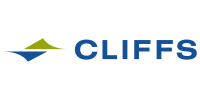Steel Markets

Cliffs forecasts 2025 rebound after Q3's weakest demand since Covid
Written by Laura Miller
November 5, 2024
High interest rates negatively impacting consumer behavior, particularly in the automotive and housing markets, were the primary drivers of the demand weakness seen across the third quarter, according to Cleveland-Cliffs executives.
Despite its disappointing $242-million loss in the quarter, the company forecasts much better days in 2025.
High interest rates driving demand weakness
On Tuesday’s earnings conference call, Cliffs’ Chairman, President, and CEO Lourenco Goncalves said demand in Q3 was the weakest it’s been since Covid.
High interest rates and much higher prices are holding customers back from buying new vehicles and houses, he explained.
Consequently, Q3 automotive build rates in North America were the lowest since the semiconductor shortage a few years ago, EVP and CFO Celso Goncalves said on the call.
To align production with the reduced demand, Cliffs hot idled the C-6 blast furnace at its Cleveland Works in Ohio in October. The temporary idling has removed about ~1.5 million short tons of annual capacity from the market.
And as a result, the steelmaker did not hit its sales target of 4 million short tons. In fact, steel shipments slid 4% from the prior quarter to 3.8 million st.
“Achieving our 4-million-ton sales target would have forced us to change prices even lower,” Lourenco noted.
Celso said similar volumes are expected for Q4, with additional Stelco tonnages helping to offset lower Cliffs standalone shipments.
With Stelco’s “nimble” operations now a part of the company, Lourenco expects Cliffs’ overall cost structure to improve significantly. Stelco’s operations will also allow Cliffs to better serve the non-automotive markets, as its main customers are service centers and non-auto end users.
Lourenco expressed confidence that Cliffs will regain business from two automakers who opted to buy from other steelmakers that offered lower prices. He said those auto companies might regret their decision to source steel from other suppliers, claiming that they were underperforming compared to their peers.
Additionally, the CEO noted that Cliffs had to be “a lot more flexible in taking lower prices” on automotive contracts, not due to steel costs but because of competition from “foreign-owned companies operating here inside the borders of the United States.”
Bullish on 2025 and bringing back Cleveland blast furnace
Lourenco said the C-6 blast furnace will be brought back online as soon as steel demand and prices recover “sometime early next year.”
“As soon as we see more green shoots, we’ll think about what we do from a footprint standpoint and bringing it back,” Celso added.
He noted there are “a lot of potential catalysts that are brewing in the market that could be a benefit here in the short term.”
Those potential benefits? He mentioned declining interest rates, clarity after the US election, the reshoring of manufacturing, an eventual rebound in automotive, coming infrastructure spending, and unattractive import prices.
Lourenco also said he anticipates increased trade protection – depending on who becomes the next US president.
“I anticipate a lot more actions in terms of protecting the domestic market against the ones that act in concerted efforts to destroy it, and I’m talking about some that are already operating here inside the United States and some of these that are not going to be able to come in,” he noted.
The wrap-up of a long, uncertain election season should provide more clarity in the next few days, Lourenco said.
“Customers will start placing orders, and things will start to heat up fast. I’m anticipating a very strong Q1,” he declared, adding that Cliffs should return to normal volume levels in the first half of next year.
In that context, Lourenco said he’s “very excited, very bullish about 2025.”

Laura Miller
Read more from Laura MillerLatest in Steel Markets

CMC looks beyond Arizona micro-mill woes to long-term viability of construction mart
Despite the economic and geopolitical upheaval of the last five years, CMC President and CEO Peter Matt points out that the construction market has been an essential element of the way forward.

US importers face stricter rules under revamped S232 tariffs
“CBP expects full compliance from the trade community for accurate reporting and payment of the additional duties. CBP will take enforcement action on non-compliance," the agency said in a March 7 bulletin.

Steel exports rebound in January
US steel exports recovered to a five-month high in January after having fallen to a two-year low in December. This growth follows four consecutive months of declining exports.

Construction spending drops marginally in January
Construction spending edged down slightly in January, slipping for the first time in four months. The US Census Bureau estimated spending at a seasonally adjusted annual rate of $2,196 billion in January, down 0.2% from December’s downward revised rate. The January figure is 3.3% higher than a year ago. January’s result, despite the slight erosion, […]

HVAC equipment shipments slow in December but strong annually
Shipments of heating and cooling equipment in the US fell to an 11-month low in December, according to the latest data released by the Air-Conditioning, Heating, and Refrigeration Institute (AHRI).
